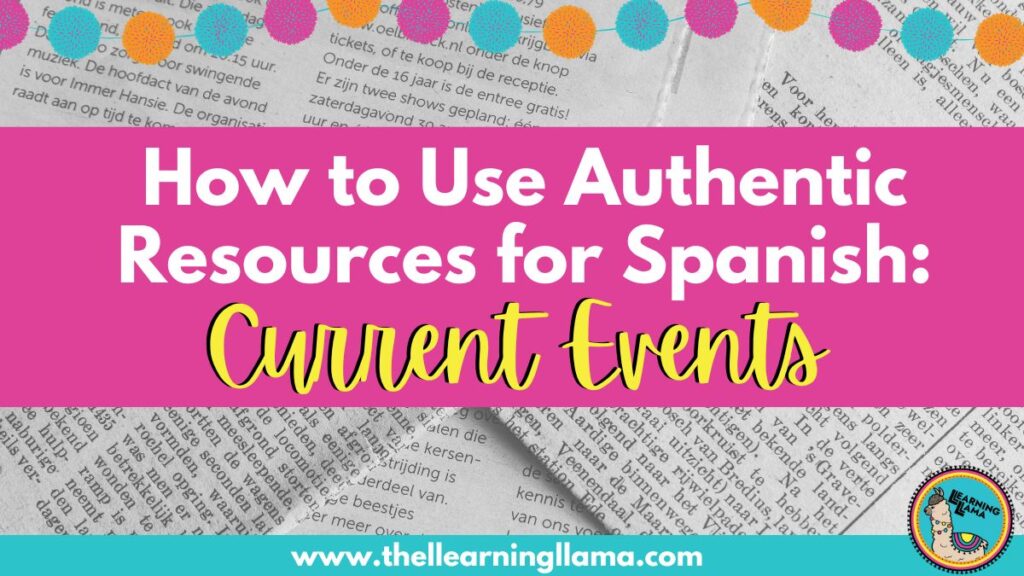It is essential that students encounter authentic texts in a world language classroom. One great example of an authentic text is the news, and you can do countless activities with Spanish current events! With a news article, it is made for Spanish speakers by Spanish speakers. The information is real and relevant. The best part about Spanish current events is that you can do something different with them each time, and the material is always changing, so you’ll never run out of content!
Keep reading to learn where I find Spanish current event resources and my favorite activities for using current events in the classroom.
Where do I find Spanish Current events?
Finding news articles at an appropriate level for novice and intermediate students can be challenging. We’ve all clicked on a news article before that has been too long for our attention span. We don’t want to scare our students off by doing the same thing. So, here are my suggestions for finding Spanish current events that are comprehensible and accessible for your students.
Newsela
Newsela is one of my favorite websites and resources as a Spanish teacher. There is a whole library of Spanish news articles for students. Just make sure you click “Spanish library.” Now, for the best part. Each article can be differentiated to meet the reading levels of all of your students! With one click, you can change the word count in the article to adjust the difficulty level. Each student will be reading an article with the same main idea, but the title, word count, and difficulty will be different. All the differentiation is done for you! What is better than that?
Student Magazines
Scholastic offers Spanish magazines for students in three different levels. I am a huge proponent of these magazines, and if I had to teach with only ONE RESOURCE for the rest of my teaching career… this would be it! These magazines are bright, colorful, and relevant. Each edition is published bi-monthly. The kids can really relate to the topics and articles and usually take great interest in them.
I’ve dedicated an entire week to one article at a time. They are jam packed with information… information that you won’t find elsewhere. For example: the new emojis, Spanish Guinness World Records, or the history of video games.
The price of the subscription may turn you away, but if you even just buy one subscription for yourself, you will have a great resource and it will give you many ideas. Over time, you will have a small library of magazines and students will have the opportunity to read an article of their choosing.
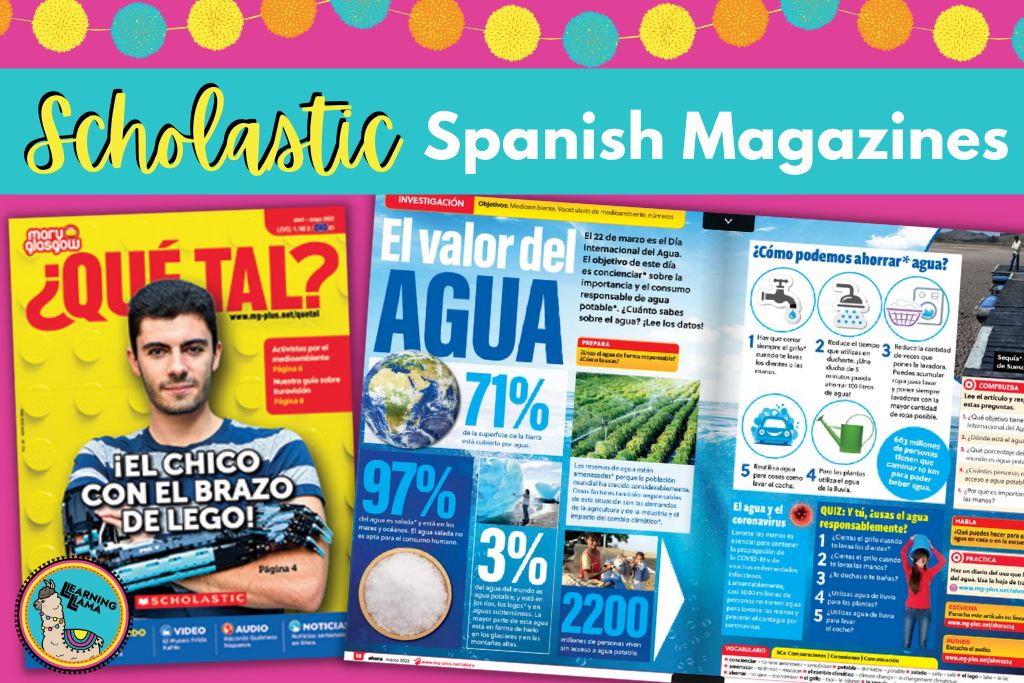
News Outlets
CNN en Español, Univisión, and El País are truly authentic news sites that people all over the world access everyday. While some of the articles may be a little too advanced, if you do some digging you will be sure to find articles that can pertain to your lessons.
What you could do instead of reading entire articles from here is just show the headline, image, and one caption. That alone can be a great discussion, Do Now, or even weekly current event assignment. Look at the example below. You’ll see that with just the headline, photo, and caption, I’ve generated a small vocab list that could potentially be used for an entire class period!
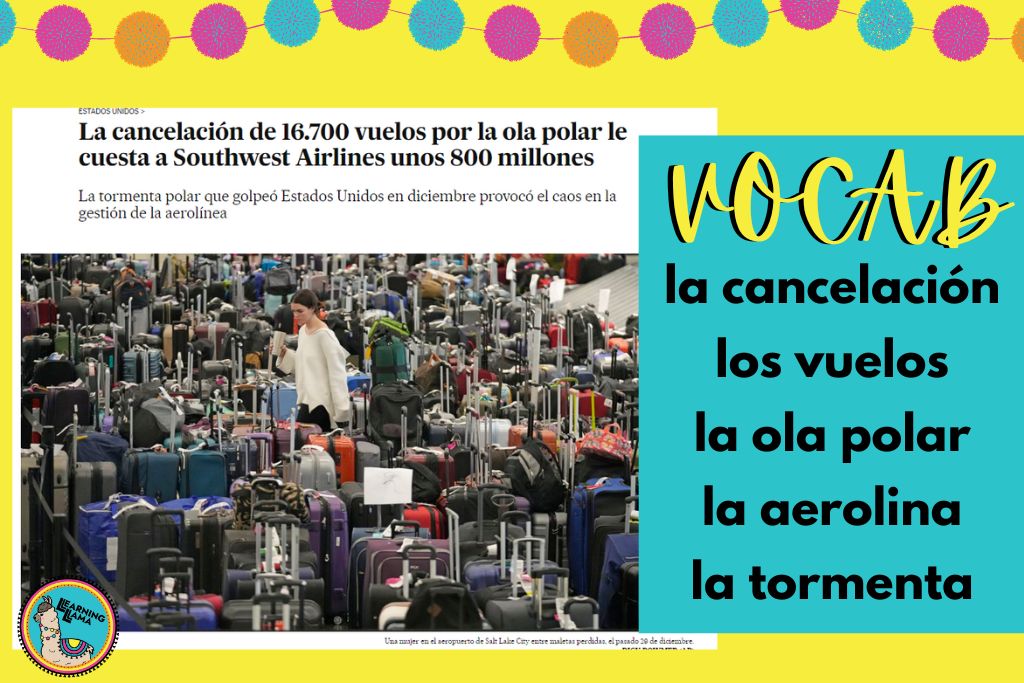
Podcasts
Interpretive tasks do not just have to be reading! Don’t forget that listening is an interpretive skill. One of my favorite podcasts is “Notes in Spanish.” The two podcast hosts discuss everyday topics and current events. There are four levels of difficulty for listening, so you will be sure to find something that fits your students’ needs. Plus, this is free! Some online Spanish podcasts or news sites require a subscription, but not Notes in Spanish. Duolingo also has very interesting topics, such as this episode about an endangered frog species. I dedicated a week to this podcast, with TPRS style teaching and a fun Match.com profile for an endangered animal!
I’ve taught many lessons with podcasts before, and you can learn more about how to use podcasts on this blog post!
What should I do with Spanish current events?
Now that you have some Spanish current events resources, what do you do with them? Just simply reading or listening to the news and answering questions will get boring pretty quickly. So, here are my suggestions!
Annotation & Close Reading
Take a reading and really dissect it. Some news articles will really provoke emotions, feelings, even shock and awe. The news can lead to in depth discussions and reflection, but only if students are given the time and resources to really interpret the text. Close reading is a strategy is a thoughtful analysis of a text that requires reading, re-reading, annotating, and discussion. Learn more about close reading here and grab your free annotation bookmarks for your students!
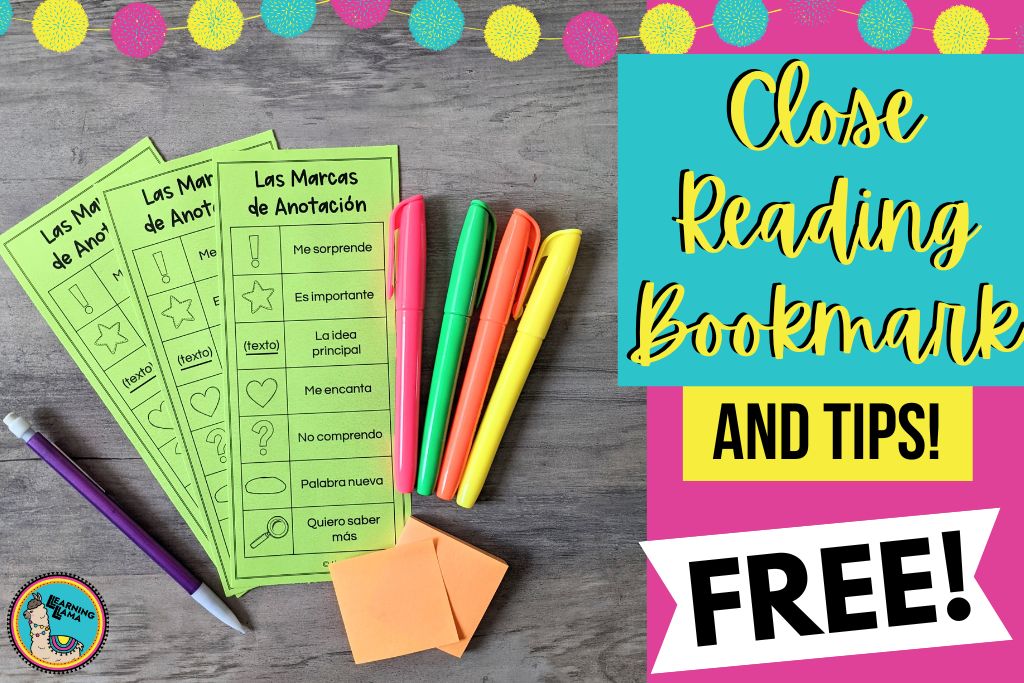
Complete Target Language Lessons
You can have your students read an article, but I always find that they better understand the news and take more interest in it when I first present it to them. I share images, use comprehensible input strategies, focusing on a few key vocabulary terms, and then let them retell the news with gallery walks, turn/talks, and more. You can check out my entire lessons for Hurricane María in Puerto Rico and Earthquakes in Mexico.
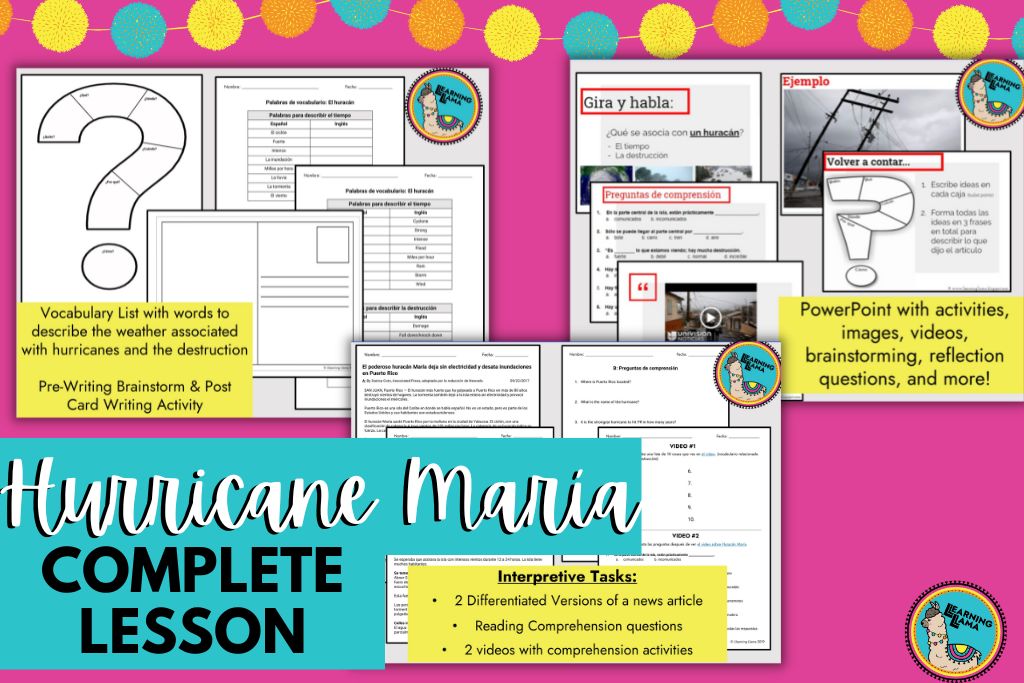
Be a News Reporter
It is one thing to read or listen to the news, but to be able to retell what you just heard in the target language is another skill to acquire. Students will act as news reporters retelling the story. Provide them with the skills to be a good reporter. Remind them that a reporter answers the 5 Ws: who, what, where, when, and why. Graphic organizers will come in handy during this stage.
When they are ready to retell the story in their own words, they can…
- Write their own newspaper article as a summary. They can draw an image, create a new headline, and write captions for the images.
- Record a video as a news reporter, highlighting the main details. For fun, add a virtual background, microphone, and news channel logo!
- Work in pairs to act as an interviewer and witness, victim, etc. Students ask and answer questions about the current event.
Current Events Presentations
When I taught Spanish 4, I assigned a current events project each marking period, based on our current unit. For example, during Marking Period 1, we were studying the AP theme of Global Challenges. Students worked in pairs to find a news article from a Spanish speaking country about global challenges (immigration, endangered animals, poverty, political unrest, environment, etc.) They read the article, created a vocabulary list, comprehension questions, game, and a presentation. Each pair signed up to present their project on one Friday during the marking period. We had one presentation each week for the entire 9-weeks.
The pair would present the main idea and supporting details, then teach the vocabulary, ask questions, play a quick game, and have students reflect on the current event. It was a full lesson like I would teach, but I didn’t have to lift a finger. I’ve always found that students get much more out of a lesson when they are the “teachers.”
Weekly Current Event Research
I remember doing weekly current event research reports in high school history class and in my college Spanish for Business course. It was a “homework” assignment, as there was no class time dedicated to this. I had to find an article, write a summary and reflection each week. This is a simple assignment for students to do each week, once in a while, or even once as a sub plan.
Here is a great template for current event research!!
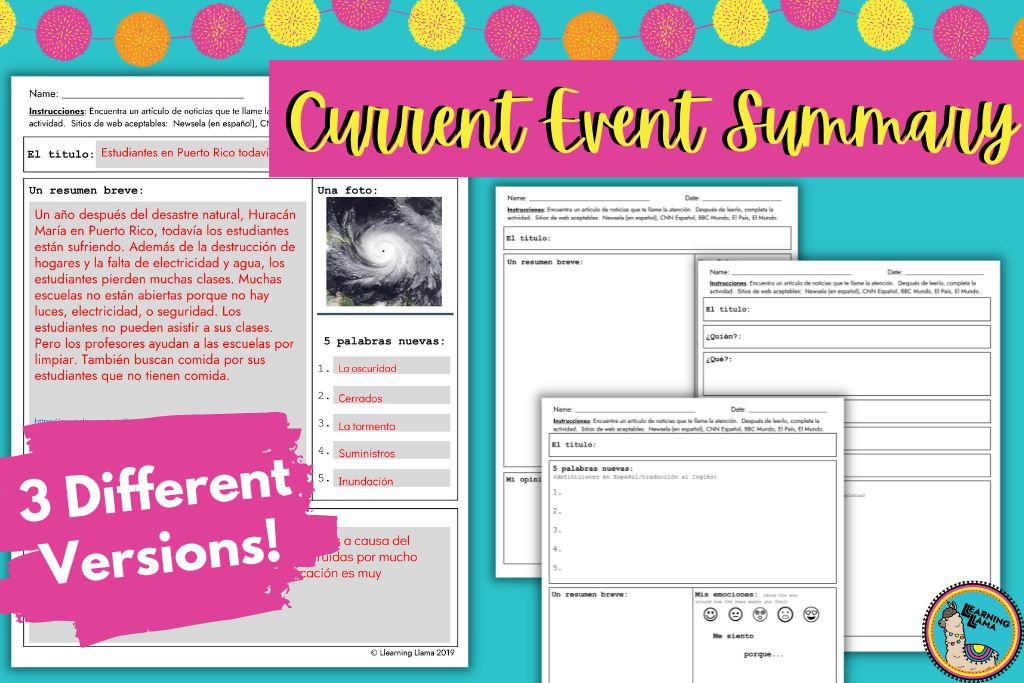
Class Newspaper
This works well for small classes or even a Spanish Club. Your students can report on current events around the world, in your community, or in your school. I’m sure there is already a school newspaper, so now there will be a Spanish edition! If you have a section on world news, focus on current events in the Spanish-speaking world so that they are still learning about content applicable to Spanish class. Then, the rest of the newspaper can be about school news, like teachers who speak two languages, foreign exchange students, or a review of a new Netflix movie in Spanish.
There is so much you can do with just one article – now imagine what you can do with all these resources and websites! And, since new articles are published every day, you will never run out of new ideas for Spanish current events.

